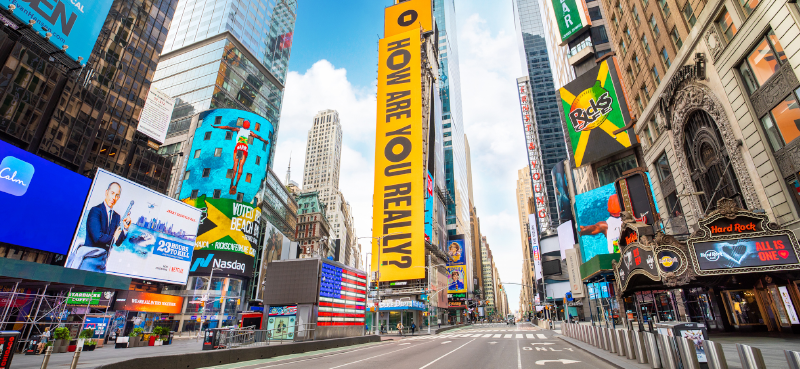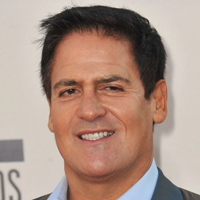Kevin Plank could have taken a job at Prudential Life Insurance.
Instead, the walk-on football player from the University of Maryland chose to start an apparel company.
In 1995, he maxed out his credit cards to the tune of $40,000 and used his grandmother’s basement to build his first prototype.
Kevin created a revolutionary new T-shirt designed to keep athletes cool, dry and light – and it was a huge hit. In just 12 months, some of the top colleges and professional football teams lined up to buy his apparel called Under Armour (UA).
Under Armour generated $17,000 in sales in its first year of business. Today, the company is the most innovative athletic apparel maker in the world — generating more than $3 billion in annual sales.
Shares have been on a tear — rising more than 200% in the past two years. In fact, if you bought the stock on the first day of trading in 2005, you are sitting on gains of 1,146%!
Those are some monster gains. And I don’t blame investors who want to take profits after that kind of run.
But, Under Armour still has huge upside potential.
Under Armour’s Playmakers
Over the past few years, Under Armour has been taking market share from some of its biggest rivals. It is now the second-largest sports brand in America behind Nike (NKE). The company passed Adidas in sales a few months ago.
This should come as no surprise. The biggest spenders on sports apparel are Millennials. This term defines children of the Baby Boomer generation or the generation of young people currently in high school and college.
In fact, you could say Under Armour owns this space.
Kevin Plank might understand this generation better than anyone else. His headquarters in Baltimore hosts a basketball court and a 10,000-square foot facility called the Under Armour Combine Center. There, employees can take group fitness, cross training and yoga classes.
Most of the employees are in great shape and can wear jeans and T-shirts to work. What’s more, when new employees are hired, they receive $50 a month for personal training sessions.
The company also has its own eatery that serves healthy foods like sushi and salmon.
In the college space, Under Armour signed a 10-year partnership with Notre Dame last year to become the exclusive provider of its footwear and apparel.
Notre Dame has one of the largest fan bases in all of college sports — and every game airs on national television.
Under Armour also has deals with Maryland, Auburn, South Carolina and Boston College. Yet, the company only supplies about 10% of the power conference schools (the most popular sports colleges).
I expect this number to rise as more colleges turn to the most-innovative brand in athletic apparel.
However, the U.S. is not the only market Under Armour is focused on…
The company is also spending big money to expand its brand in South America, China and Europe. International sales for the company totaled $288 million for the past 12 months.
That represents only 9% of total sales. Meanwhile Nike generated $18 billion in sales over the past 12 months.
That amounts to 60% of its total sales.
Clearly, there is a huge difference between $288 million in sales (UA) and $18 billion in sales (Nike). Naturally, this strong No. 2 seed wants in on the action.
Under Armour’s game plan to close the gap is to sign deals with international sports teams and to open stores in major cities.
If this plan works, Under Armour could easily see its international sales quadruple over the next three years to over $1 billion.
Under Armour is not stopping there. Digital is quickly becoming the company’s biggest platform.
Under Armour recently spent $700 million to buy three mobile fitness “app” companies: MyFitnessPal, MapMyFitness and Endomondo.
These are some of the world’s best fitness apps. They can track a person’s heartbeat, steps, calories burned and distance traveled. Many of these apps can provide top running routes using GPS.
But Under Armour isn’t going to spend its energy running a bunch of separate apps, though. Instead, it plans to combine them into one huge digital fitness social platform.

With more than 130 million people on its platform, users can tap into their Facebook (FB) and Twitter (TWTR) networks. They can post their results and challenge friends to see who burns the most calories or loses the most weight in a month.
On top of that, Under Armour’s app (calledUA Record) can synchronize with GPS platforms like TomTom and Garmin (GRMN).
The app is compatible with the Android (Google) and iOS (Apple) operating systems. It also works with wearable devices like Fitbit, Polar and Jawbone.
In short, Under Armour’s new app with over 130 million users connects to almost every wearable device, GPS platform and mobile phone.
That makes it the world’s first social network geared toward athletes and fitness fanatics.
How Much Higher Could UA Trade?
Under Armour trades at 54 times forward earnings and 12 times book value.
That’s super-expensive compared to the average company in the S&P 500, which trades at 17 times earnings and less than three times book value.
However, Under Armour generated $3 billion in sales over the past 12 months. What’s more, some analysts predict their new social fitness network could grow into a $5 billion to $10 billion market.
In addition, their home court advantage in workout gear should continue to pay off. According to research firm Trefis, the global athletic apparel market is expected to grow to $178 billion by 2019.
In other words, Under Armour’s stock is not expensive based on its massive growth potential. In fact, Apple’s multiple in 2004 (when it traded at 60 times earnings) is similar to Under Armour’s multiple today.
Think about it: If you bought Apple in 2004, you would be sitting on gains of over 6,000%!
Under Armour has huge catalysts that could result in the stock doubling from these levels inside 24 months.
Even if its international and digital growth initiatives fail, the company should still grow its sales by more than 20%-plus annually in the foreseeable future.
If you’re sitting on some nice gains in this name, you may be tempted to cash out. But for my money, I recommend letting this winner ride. In just a couple of years from now, I strongly believe you will thank me.


















